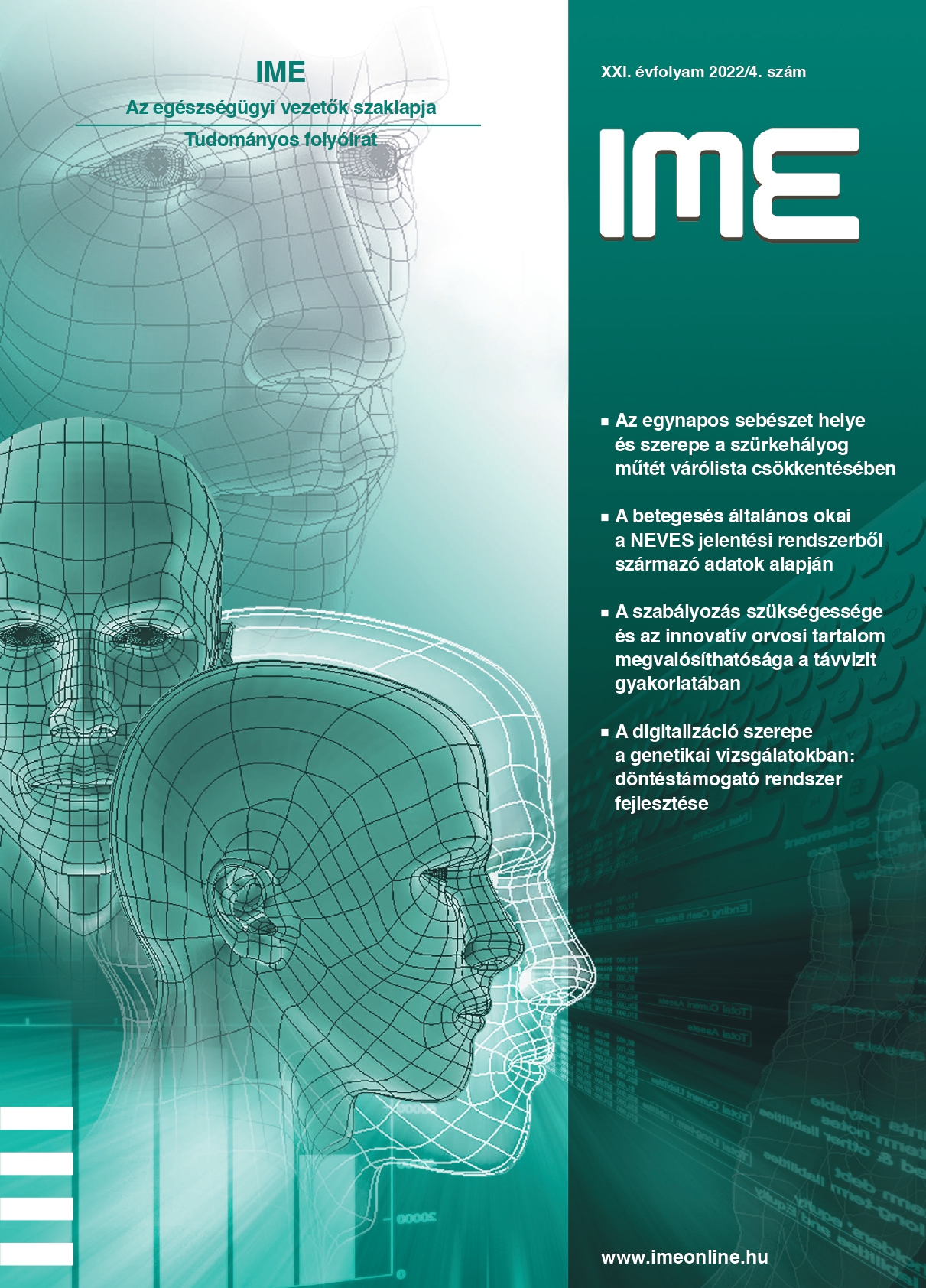General causes of patient falls based on data from the NEVES reporting system and tools that can be used for prevention
Abstract
The prevention of patient falls during health care is an important development opportunity both in terms of improving the safety of patient care and reducing the costs of health care providers.
The aim of our work is to present the research results based on the analysis of the data received in the NEVES reporting system, which highlights the general causes of patient falls at healthcare providers and their prevention options.
The Patient Falls data sheet in the NEVES reporting system is used to report falls that occurred during health care. The concept of a fall is defined in the report as follows: "An event that occurred against the patient's will, during which the patient's knee or the part of the body above the knee is in contact with the ground/floor.”
From the start of the NEVES reporting system to the beginning of data processing, 15.077 cases of falls were reported anonymously and voluntarily by Hungarian health care providers. We analysed these data statistically, and applied quality improvement techniques (process analysis, cause-effect diagram, focus group discussion, risk analysis, prioritization) to identify the causes involved in their occurrence.
In 71,4% of the 15.077 reported cases, patients were at least 65 years old. 53,2% of those affected were women and 46,8% were men. In 78,8% of the reported cases, the falls occurred inside the ward (during bed use, regardless of bed use, in the ward's water block). In 27,4% of cases, the fall occurred while standing up, sitting down, or changing seats, which is particularly the most common of the activities performed before the fall. This is followed by movement started due to an urgent need, falls related to using the toilet, and falls while walking (over 10% of cases). The number of falls associated with staff-related activities (such as physical therapy, patient transportation) is minimal. Out of the 15.077 reported cases, only 25 patients fell under the mentioned conditions.
Based on the answers, environmental factors did not play a role in 60,3% of the falls (n=9.091). Among the environmental factors associated with the institution's infrastructure, the largest percentages reported were wet floors (6,9%, n=1.037), equipment characteristics (6,4%, n=959) and device displacement (5,2%, n= 788).
At the moment of the fall, 24,4% (n=3.670) of the patients used an assistive device, 54,3% (n=8.177) had no assistive device, and in 14,0% (n=2.112) of the cases no relevant data was reported. A further 7,3% (n=1.104) have had an assistive device, but were not using it at the time of the fall. In 45,1% of the cases, the patient's muscle weakness was indicated, and in another 24,9%, the patient's general weakness was reported.
The proportion of mild injuries was 51,1%, and that of serious injuries was 6,7%. No injuries occurred in 42,2% of the cases.
The general reasons involved in the occurrence of patient falls have been classified into 12 main groups, these are as follows: deficiencies in regulation; employees do not follow the rules; lack of risk assessment; inadequate risk assessment; lack of application of prevention tools/procedures; inadequate patient handling/mobilization; problems with medication; human resource related issues; patient condition; communication gaps; infrastructure problems; the knowledge/experience gained from previous events is not used.
It is important to draw attention to the fact that these causes should be dealt as a system. In order to achieve effective prevention, all possible causes must be explored in the given institutional environment, and complex measures must be taken in an effort to eliminate as many causes as possible. In our work, we outline what specific measures can help to solve the problem when identifying the causes of patient falls.

This work is licensed under a Creative Commons Attribution-NonCommercial-NoDerivatives 4.0 International License.




